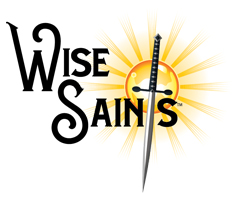Man was made in the image of God. In Genesis 1:26-31, we learned God created man as male and female in the image and likeness of God. Genesis 2:7-25 provides more specifics of the creation of man as follows. God first created Adam out of the dust of the ground. Then, God breathed life into man and placed him in a garden in Eden that God planted. This garden provided trees for food including the tree of life and the tree of the knowledge of good and evil.
Considerable debate exists concerning the location of the Garden of Eden and many theories have been postulated. First, no one knows for certain where the Garden of Eden was located. Second, the location is irrelevant for purposes of the story.
Two things stand out as to why time should not be wasted debating the location of the Garden of Eden. First, God banished Adam and Eve from the Garden and prohibited access to it by a Cherubim and a flaming sword. In other words, after the fall of man and until the end of time, the garden is inaccessible to man. Man exists separated from God and no longer lives in paradise with God. In Revelation 21 and 22, however, man is reunited into the presence of God. Very likely, the Garden of Eden exists in a heavenly dimension separate from our own. At the end of time, man will gain access to the Garden of Eden and will eat from the Tree of Life.
Second, this was before the Noahic flood. The flood drastically changed the topography of the earth placing thick layers of sedimentary rock around the world. The identity of Eden as it existed prior to the flood cannot be determined.
Nevertheless, many contend the garden was in Mesopotamia or modern-day Iraq because of the reference to the Euphrates River which exists in Iraq. This makes some sense because the passage references the garden to be eastward. If Moses wrote Genesis, Moses was oriented between Egypt and Israel/Judea when he wrote it. Eastward from this location would be Mesopotamia. The oldest known civilizations on earth arguably are Sumer and Ur, which are in Mesopotamia.
Others contend the rivers that watered the garden include rivers known to exist in Persia, Mesopotamia, Egypt and Europe. Still others argue the rivers are metaphorical and represent the four corners of the earth.
Nevertheless, as stated above, the location is irrelevant to the story. The message of the story is Man was made in the image of God, and God placed man in a garden abundantly watered, fertile and full of life. The Garden of Eden was a paradise where man lived with God. No violence existed and neither did disease and inefficient hard labor. Man did not kill animals for food. And, plants and trees with seed provided the necessary food for man and animals.
God placed man in the garden with two commands. First, God commanded man to tend and keep the garden including naming the animals. Second, God commanded man not to eat of the tree of the knowledge of good and evil that was in the midst of the garden under penalty of death.
After giving these commands, God created woman who is described as a helper comparable to man. God caused Adam to enter a deep sleep, removed a rib and formed female from Adam’s rib. Thus, we learn in Genesis 1 that God created man as male and female. We also learn in Genesis 2:24 that male should cleave to female to form one. This means that male and female are incomplete without the other, and together they form one identity known as man. Therefore, it is clear that man must consist of male and female to be fully man.
Male and female were naked and not ashamed. Sin did not exist at this time and no reason existed for them to be ashamed. This will become relevant in Genesis 3 after their disobedience. For now, while in right standing with God, sin and a reason to be ashamed did not exist in man. Man was created in the image of God with attributes like God. Man was sinless and not ashamed. This, however, is to change.

